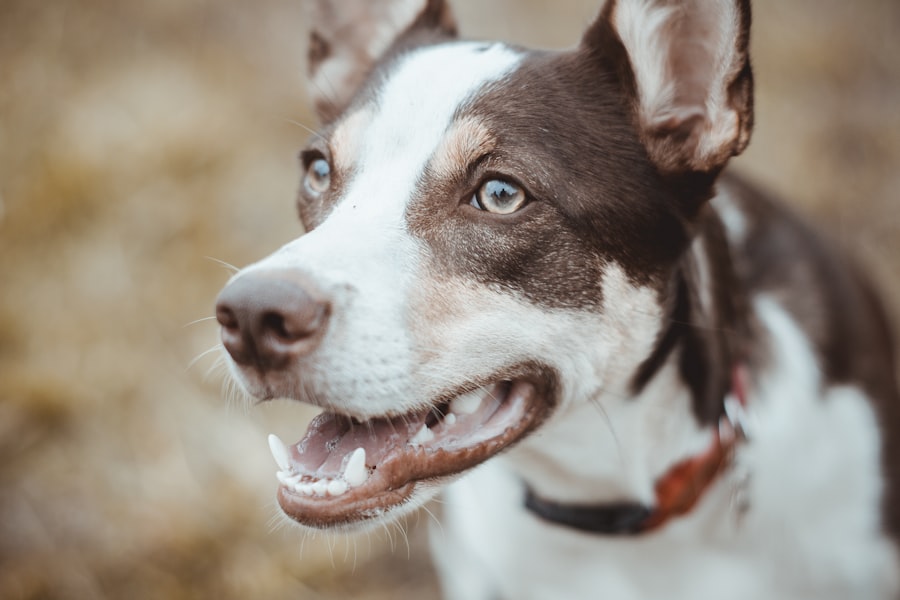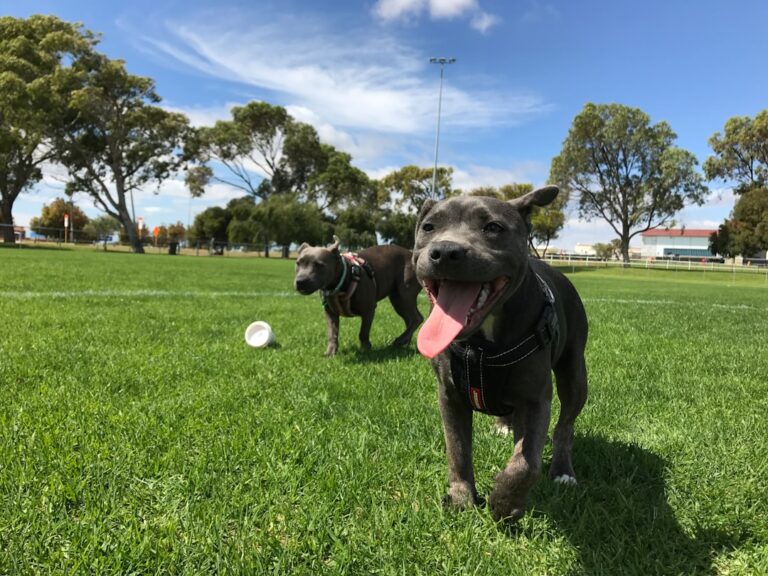Dental health is a critical aspect of overall well-being for dogs, yet it often goes overlooked by pet owners. Just like humans, dogs can suffer from a variety of dental issues, including periodontal disease, tooth decay, and infections. These conditions can lead to significant pain and discomfort, affecting a dog’s quality of life.
Moreover, poor dental health can have systemic effects, as bacteria from the mouth can enter the bloodstream and impact vital organs such as the heart, liver, and kidneys. This connection underscores the importance of maintaining good oral hygiene in dogs, as it is not merely about fresh breath or a sparkling smile; it is about ensuring their long-term health and happiness. Regular dental care can prevent many of these issues from arising.
For instance, periodontal disease is one of the most common health problems in dogs, affecting up to 80% of dogs by the age of three. This condition begins with the accumulation of plaque and tartar on the teeth, leading to inflammation of the gums and potential tooth loss if left untreated. By prioritizing dental health, pet owners can help their dogs avoid painful procedures and costly veterinary bills associated with advanced dental diseases.
Establishing a routine that includes brushing, dental chews, and regular veterinary check-ups can significantly enhance a dog’s quality of life.
Key Takeaways
- Good dental health is important for dogs to prevent pain, infection, and other health issues
- Signs of dental problems in dogs include bad breath, swollen or bleeding gums, and difficulty eating
- Regular brushing with a dog-specific toothbrush and toothpaste is essential for maintaining healthy teeth
- Choosing the right toothbrush and toothpaste for your dog’s size and preferences is crucial for effective brushing
- Implementing a dental care routine, providing dental chews and toys, and scheduling professional cleanings are all important for maintaining your dog’s dental health
Signs of Dental Problems in Dogs
Recognizing the signs of dental problems in dogs is crucial for early intervention and treatment. One of the most common indicators is bad breath, or halitosis, which can signal the presence of plaque buildup or gum disease. While some degree of odor is normal, particularly in older dogs, a sudden change in breath quality should prompt an examination.
Additionally, pet owners should be vigilant for signs of discomfort when their dog is eating or chewing. If a dog exhibits reluctance to eat, drops food from its mouth, or shows signs of pain when chewing, these could be symptoms of dental issues that require attention. Other signs to watch for include excessive drooling, swollen or bleeding gums, and changes in behavior such as increased irritability or withdrawal.
A dog may also paw at its mouth or rub its face against furniture in an attempt to alleviate discomfort. In more severe cases, loose teeth or visible tartar buildup can be observed during routine checks. Regularly inspecting your dog’s mouth can help catch these issues early on.
If any of these symptoms are present, it is essential to consult a veterinarian for a thorough dental examination.
Regular Brushing for Healthy Teeth

Brushing your dog’s teeth is one of the most effective ways to maintain their dental health. Just as with humans, regular brushing helps remove plaque before it hardens into tartar, which can lead to more serious dental issues. Ideally, dogs should have their teeth brushed daily; however, even a few times a week can make a significant difference.
The process may require some patience and training, especially if your dog is not accustomed to having its mouth handled. Starting slowly and using positive reinforcement can help make this routine more enjoyable for both you and your pet. When brushing your dog’s teeth, it is important to use a toothbrush designed specifically for dogs, as human toothbrushes may be too harsh on their gums.
Additionally, dog-friendly toothpaste is essential; human toothpaste contains ingredients that can be harmful to dogs if ingested. Many pet owners find that flavored toothpaste—such as chicken or peanut butter—can make the experience more appealing for their furry friends. Establishing a consistent brushing routine not only promotes better dental health but also strengthens the bond between you and your dog through shared activities.
Choosing the Right Toothbrush and Toothpaste
| Factors | Considerations |
|---|---|
| Size of Toothbrush Head | Choose a toothbrush with a smaller head to reach all areas of the mouth |
| Bristle Type | Soft bristles are gentle on gums and enamel, while hard bristles can be too abrasive |
| Toothpaste Ingredients | Avoid toothpaste with harsh chemicals and opt for fluoride for cavity protection |
| Grip Design | Look for a toothbrush with a comfortable and non-slip grip for better control |
| Special Features | Consider special features like tongue cleaners or gum stimulators for added oral care |
Selecting the appropriate toothbrush and toothpaste for your dog is vital for effective dental care. Dog toothbrushes come in various shapes and sizes, including finger brushes that fit over your fingertip for better control and traditional brushes with angled heads designed to reach all areas of the mouth. The bristles should be soft to avoid damaging your dog’s gums while still being effective at removing plaque.
Some brushes even come with dual ends—one for larger dogs and another for smaller breeds—allowing for versatility based on your dog’s size. When it comes to toothpaste, it is crucial to choose products specifically formulated for dogs. These toothpastes are designed to be safe for ingestion and often come in flavors that appeal to dogs, making brushing a more pleasant experience.
Ingredients such as baking soda can help neutralize odors and reduce plaque buildup without the harmful effects associated with fluoride found in human toothpaste. Always read labels carefully and consult your veterinarian if you are unsure about which products are best suited for your dog’s needs.
Implementing a Dental Care Routine
Establishing a comprehensive dental care routine is essential for maintaining your dog’s oral health over time. This routine should include regular brushing sessions, ideally daily or at least several times a week, along with periodic dental check-ups at the veterinarian’s office. In addition to brushing, incorporating dental treats or chews into your dog’s diet can help reduce plaque buildup between brushings.
These products are designed to promote chewing action that scrapes away food particles and plaque from teeth. Another important aspect of a dental care routine is monitoring your dog’s oral health at home. Regularly inspecting your dog’s mouth for signs of trouble—such as redness in the gums or loose teeth—can help catch potential issues early on.
Keeping track of any changes in your dog’s eating habits or behavior can also provide valuable insights into their dental health. By being proactive and consistent with dental care practices, you can significantly reduce the risk of serious dental problems developing in your dog.
Providing Dental Chews and Toys

Incorporating dental chews and toys into your dog’s routine can be an effective way to support their oral health while also providing mental stimulation and entertainment. Many commercial dental chews are designed specifically to promote oral hygiene by reducing plaque and tartar buildup as dogs chew on them. These products often have textures that help clean teeth and massage gums, making them an excellent complement to regular brushing.
When selecting dental chews or toys, it is important to choose those that are appropriate for your dog’s size and chewing habits. Some dogs may be aggressive chewers and require more durable options to withstand their chewing power without breaking apart. Additionally, always supervise your dog while they are enjoying these products to prevent choking hazards or ingestion of large pieces.
By integrating dental chews into your dog’s daily routine, you not only enhance their dental health but also provide them with an enjoyable activity that keeps them engaged.
Professional Dental Cleanings for Dogs
While at-home care is essential for maintaining your dog’s dental health, professional cleanings performed by a veterinarian are equally important. These cleanings typically involve a thorough examination of the teeth and gums under anesthesia, allowing the veterinarian to access areas that may be difficult to clean at home. During this procedure, plaque and tartar are removed using specialized tools, and any necessary treatments—such as extractions or deep cleaning—can be performed.
The frequency of professional cleanings will depend on various factors including your dog’s age, breed, diet, and overall health. Some dogs may require cleanings as often as once a year, while others may need them every few years based on their individual needs. Regular veterinary check-ups will help determine the appropriate schedule for your dog’s professional dental care.
Investing in these cleanings not only helps prevent serious dental issues but also contributes to your dog’s overall health by reducing the risk of systemic diseases linked to poor oral hygiene.
Monitoring Your Dog’s Diet for Dental Health
Diet plays a significant role in maintaining your dog’s dental health. Certain types of food can contribute to plaque buildup while others may help reduce it. For instance, dry kibble is generally better for dental health than wet food because its texture can help scrape away food particles from teeth during chewing.
Additionally, some commercial dog foods are specifically formulated with ingredients that promote oral health by reducing plaque formation. Incorporating fresh fruits and vegetables into your dog’s diet can also provide natural benefits for their teeth. Crunchy options like carrots or apples can serve as healthy snacks while helping to clean teeth naturally as they chew.
However, it is essential to avoid feeding dogs foods that are harmful to their dental health or overall well-being; sugary treats or those high in carbohydrates can exacerbate dental problems. Consulting with your veterinarian about the best dietary choices for your dog’s specific needs will ensure that you are supporting their dental health effectively through nutrition.
Preventing Dental Issues with Regular Check-ups
Regular veterinary check-ups are crucial for preventing dental issues before they become serious problems. During these visits, veterinarians can perform thorough examinations of your dog’s mouth and teeth, identifying any early signs of dental disease that may not be visible during at-home inspections. These check-ups also provide an opportunity for pet owners to discuss any concerns they may have regarding their dog’s oral health.
In addition to examinations, veterinarians can offer tailored advice on at-home care routines based on each dog’s unique needs. They may recommend specific products or techniques that could enhance your current dental care practices. By establishing a routine of regular veterinary visits—ideally once a year—you can stay ahead of potential dental issues and ensure that your dog maintains optimal oral health throughout their life.
Understanding the Role of Genetics in Dental Health
Genetics play a significant role in determining a dog’s predisposition to certain dental issues. Some breeds are more prone to periodontal disease due to factors such as jaw structure or tooth alignment. For example, small breeds like Chihuahuas and Dachshunds often have crowded teeth that can lead to increased plaque accumulation and gum disease compared to larger breeds with wider jaws that allow for better spacing between teeth.
Understanding these genetic predispositions can help pet owners take proactive measures in managing their dog’s dental health. For instance, if you own a breed known for dental issues, you may need to implement more rigorous dental care routines from an early age. Consulting with breeders or veterinarians familiar with specific breeds can provide valuable insights into potential risks and effective preventive strategies tailored to your dog’s genetic background.
Tips for Dealing with Dental Anxiety in Dogs
Dental anxiety is a common issue among dogs when it comes time for brushing or professional cleanings. Many dogs associate these activities with discomfort or stress due to past experiences or unfamiliarity with the process. To help alleviate this anxiety, it is essential to create positive associations with dental care routines from an early age.
Gradually introducing brushing techniques using treats or praise can help make the experience more enjoyable. Additionally, desensitization techniques can be beneficial in reducing anxiety related to veterinary visits for professional cleanings. Taking your dog to the vet’s office just for positive experiences—such as receiving treats or engaging in play—can help them associate the environment with positive outcomes rather than stressors.
If anxiety persists despite these efforts, discussing options with your veterinarian may lead to solutions such as calming supplements or medications that can ease your dog’s stress during dental procedures. By understanding the importance of dental health and implementing effective care strategies tailored to individual needs, pet owners can significantly enhance their dogs’ quality of life while preventing serious health issues down the line.












